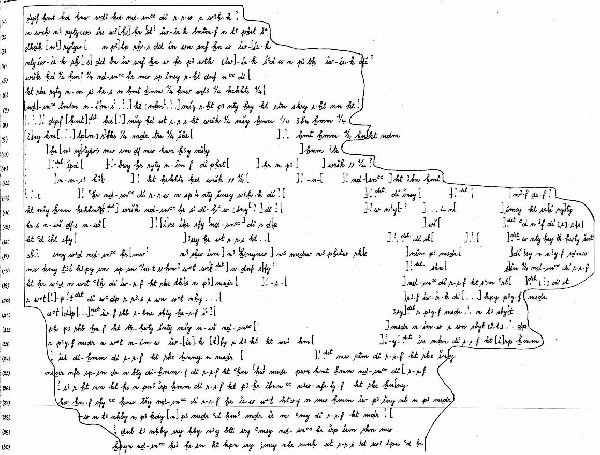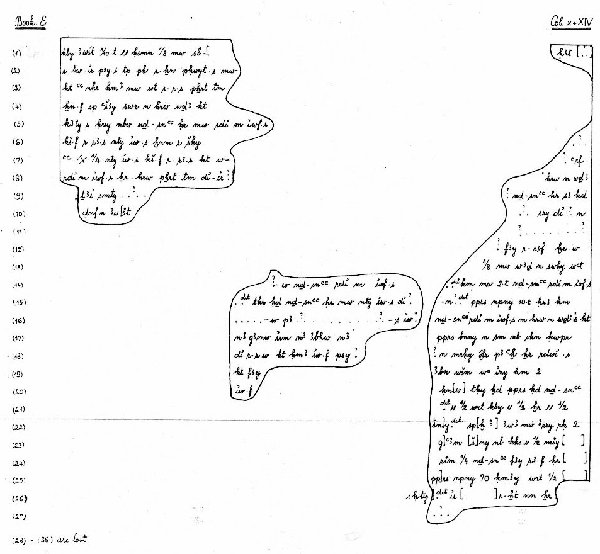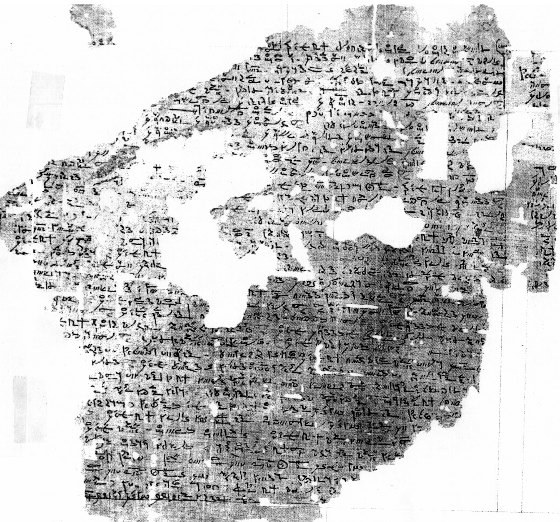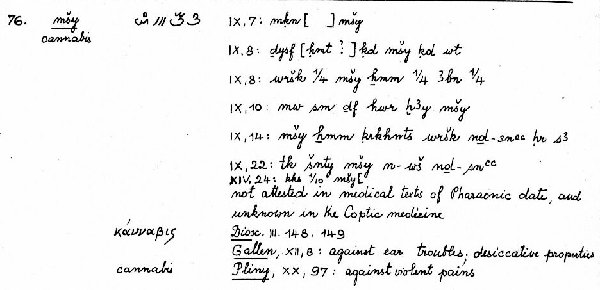|
A SHORT GRAPHICAL HISTORY EGYPT |
|---|
| WARNING: Almost all the information contain in this section comes from the book, “The Demotic Crocodilopolis Medical Book (P. Vienna 6257)” by Eve A. E. Reymond. Unfortunately while being the best book out there on the subject, it does seem to contain numerous publishing errors; some of which effect the topic at hand. [1] |
|---|
The Vienna Papyrus, is also known by a variety of other names, such as:
IMPORTANCE:
Although the Vienna medical papyrus was written around 200 AD (and thus not really an ancient Egyptian papyrus) its main importance is that it is actual a composite of ALL other Egyptian medical knowledge from before when.
“The Medical Papyrus is the only document of its kind which could be identified among the scientific material that has survived from the temple library of Suchos. It is not without interest for the history of ancient Egyptian medicine, in particular for medical practice in Hellenistic times.LANGUAGE
. . . A considerable number of medical works have been preserved from the Middle and New Kingdom; then, following a gap of many centuries between the 19th Pharaonic dynasty, and the 2nd half of the 2nd century AD)., the date of our papyrus, a period during which this category of scientific sources is scarcely represented by native Egyptian documents, only one complete manuscript can be cited from the Coptic era.
. . . The Fayyum Medical Book is known to us, is an extensive codification of medical writings the original copies of which range in date from the time of the Pharaonic dynasties to late Ptolemaic times, when these various unrelated medical works seem to have been assembled, and amalgamated . . . It is possible that all the copies included in this codex of medical writings may have been in the possession of the Temple of Suchos already before the end of the Ptolemaic era, and that . . . the 2nd century A.D. copy of the whole book may have been written for the simple reason that the copy of somewhat earlier date had deteriorated, and its physical conditions required a fresh one.”
The language of papyrus is the language of the Egyptian people (200 AD) during the Greco-Roman era, with the actual script itself being the Demotic (used at the time) as oppose to Roman alphabet.
“Headings of prescriptions were in many respects retained in their original wording which comes to such an extent that even prepositions with their use in the Middle Egyptian have been retained. Also a good number of idiomatic expressions of earlier date recur there with their original spellings . . . Names of ingredients, however, show much that is new; many of those which are familiar to us from the texts of Pharaonic date were replaced, perhaps under the influence of new medical practice, or by combining traditions. In this respect our papyrus as a scientific document reveals much that is new, and hitherto unparalleled in medical works of earlier date. On the whole it is an invaluable contribution for the richness of its technical vocabulary. Of special importance are Demotic transliterations of Greek names of plants and metals.”
 = Demotic Script Coptic for Medical Cannabis, pronounced
= Demotic Script Coptic for Medical Cannabis, pronounced 
The Papyrus Itself:
The Papyrus itself (what’s left of it) is not really a scroll so much as a bunch of bits and pieces:
“This roll of papyrus is made up from a material of very fine and good quality, transparent, medium brown in color, changing into pale brown, with darkish patches, and with smooth surface. All the sheets of papyrus from which this roll was composed, show trends of the same manufacturing which is of high standard, . . . The Demotic writing shows in all the fragments in question features which are identical to such an extent that it is possible to conclude that the were written by a single hand.” . . . In its present state of preservation the Medical Book in question consists of 16 partly preserved columns of text . . . The text is only recorded on the recto of the papyrus.”DATING:
“The external features of this roll of papyrus, and the evidence in the palacegraphy of its writing suggests the second part of the 2nd A.D . . . [However] the date of the original text [that this is a copy of] seems to go back to the 6th century B.C. The tendency to codify manuscripts of earlier date into one composite whole is manifest in Egyptian medical and magical texts of all times of history; they are in general heterogenous compositions drawn from various sources. These trends are applicable to the Fayyum Medical Book."
| WARNING: Due to apace and download limitations, some of the following plates are not really readable. If needed feel free to request better quality copies. |
|---|

Quiz - Can you locate all five MSY mentions






Pharm., No. 76 = Medical Cannabis










FOOTNOTES:
[1]- Specifically page 76, states a Cannabis mention on plate XIV, Line 24 ; this should read plate XIV, Line 23. Also while a modern day drawing (using the Roman alphabet) of plate XIV is provided, somehow or another, in the section showing photographs of the original, a totally different image has been substituted with no original shown. [but with this authors bad spell + grammar abilities, I should speak]
[2]- Suchos is also spelled as Sobek Sobeq, Sebek, Sochet, his usually depicted as being half man half alligator and was the God of water.
WANT TO KNOW MORE:
=====================
Want better quality images? Due to space / download time considerations, only selected materials are displayed. If you would like to obtain more information, feel free to contact the museum. All our material is available (at cost) on CD-Rom format.
CONTACT PAGE
EGYPT Back to the Last Section |
 BACK TO MAIN SECTION |
EGYPT On to the Next Section |